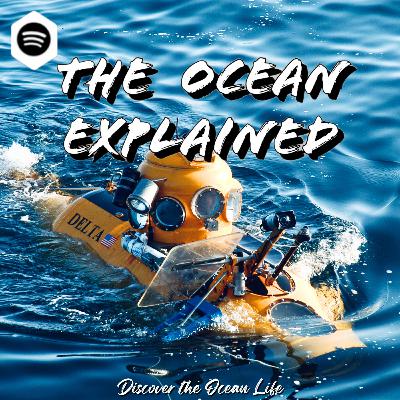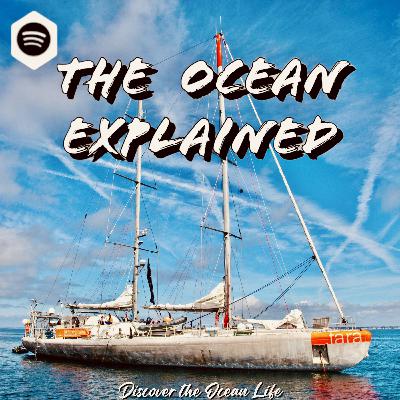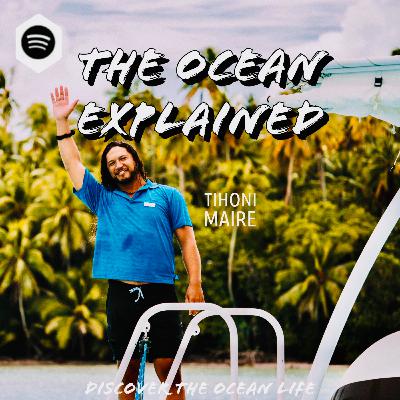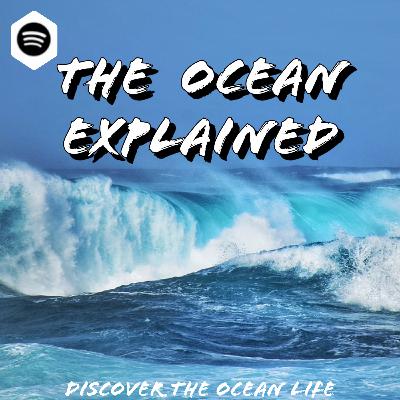Discover The Ocean Explained
The Ocean Explained

The Ocean Explained
Author: Clément J.E.
Subscribed: 10Played: 11Subscribe
Share
© Clément J.E.
Description
The Ocean Explained Podcast offers an immersive way to explore the ocean's wonders.
Each episode dives deeply into a unique topic related to marine life, conservation, and oceanography. Featuring a panel of marine biologists, divers, explorers, paleobiologists, and conservation experts, the podcast shares extensive knowledge, captivating stories, and valuable insights. From the secrets of the deep sea to the vital importance of coral reefs, every aspect of the ocean is covered.
With one high-quality episode released monthly, this podcast is the go-to source for an enjoyable dose of H20.
Each episode dives deeply into a unique topic related to marine life, conservation, and oceanography. Featuring a panel of marine biologists, divers, explorers, paleobiologists, and conservation experts, the podcast shares extensive knowledge, captivating stories, and valuable insights. From the secrets of the deep sea to the vital importance of coral reefs, every aspect of the ocean is covered.
With one high-quality episode released monthly, this podcast is the go-to source for an enjoyable dose of H20.
32 Episodes
Reverse
Dive into the unexpected acoustic world of the deep ocean in this illuminating episode of Tide Talk. While most imagine the deep sea as a silent, dark void, we reveal the surprising truth: it's a bustling concert hall of natural and man-made sounds.Discover the tiny pistol shrimp that produces sounds louder than jet engines, the haunting songs of deep-diving whales, and the geological symphony of underwater earthquakes and melting icebergs. We also examine how human activities create an artificial cacophony that disrupts this ancient soundscape.From the crackling colonies of snapping shrimp to the mysterious unexplained booms that baffle scientists, this episode will forever change how you imagine the ocean depths. Perhaps the deep sea isn't so quiet after all—you just need to know how to listen.For those who thought silence ruled the abyss, prepare to have your assumptions depth-charged. The ocean, it turns out, never stops talking.Tune in!PictureCredit:https://commons.wikimedia.org/wiki/File:CINMS_yellow_submarine_(48770943696)Instagram : oceanexplained_
Dive into our latest episode of Tide Talk! Discover how scientists are revolutionizing fish tracking without ever casting a net. In this fascinating World Ocean's Day special, we unveil the groundbreaking technique of eDNA - nature's underwater fingerprint system.Learn how a simple water sample can reveal the hidden life beneath the waves, from elusive sea creatures to thriving coral reef communities. We'll explore real-world success stories from the legendary Tara Ocean Expeditions, including the discovery of 150 unknown plankton species!Perfect for ocean enthusiasts, science lovers, and anyone curious about innovative marine research methods. Join us as we decode the genetic traces left behind in our oceans and revolutionize how we study marine life.Key highlights:Understanding eDNA: Nature's underwater detective systemCutting-edge tools transforming marine researchAmazing discoveries from global ocean expeditionsThe future of non-invasive marine biology
In this episode, we welcome Tihoni Maire, the Head Guide of the Guide department at Tetiaroa Society. Tihoni shares his extensive knowledge and passion for the unique ecosystem of Tetiaroa Island, a jewel in French Polynesia with a fascinating history and vibrant culture.
We'll explore the island's journey from its volcanic origins 40 million years ago to its current status as a model for sustainable ecotourism. Tihoni will reveal the intriguing story of how Marlon Brando acquired the island in 1966 and the subsequent developments, including the establishment of The Brando resort and Tetiaroa Society's conservation efforts as well as the project of a “University of the Sea”!!
Listeners will gain insights into the diverse teams working on the island, from researchers studying local wildlife to the guides who bring Tetiaroa's wonders to life for visitors. We'll discuss ongoing scientific projects, the balance between tourism and conservation, and the unique challenges of guiding in this pristine environment.
Tihoni will share memorable experiences from his career, offering a glimpse into daily life on Tetiaroa and the profound impact the island has on its visitors. We'll also delve into French Polynesian culture, traditions, and their deep connection to the ocean.
The episode will highlight Tetiaroa Society's innovative approach to sustainability, including their work with local communities and the use of cutting-edge technologies. Tihoni will also discuss the exciting University of the Sea project, an initiative inspired by Marlon Brando's vision for education and conservation.
Throughout the conversation, Tihoni will regale us with fascinating anecdotes about life on Tetiaroa, encounters with wildlife, and the unique experiences that make this island a true paradise for nature lovers and conservationists alike.
Whether you're passionate about marine biology, sustainable tourism, or simply love learning about extraordinary places, this episode offers an immersive journey into the wonders of Tetiaroa Island with one of its most knowledgeable and dedicated advocates.
Check out on Instagram
In this episode we welcome our guest Liberty Denman, an experienced marine biologist, science communicator, and diver who studied at Plymouth University. In this episode, Liberty shares her valuable insights into British marine life, sharks, and her exciting projects. Discover her experiences as a student at one of the world's top universities for marine biology, her work in conservation, and the organizations she co-founded, including Onekai.
We'll delve into the fascinating ecosystems like seagrass beds, kelp forests, and rocky reefs, and explore the impacts of human activity on the ocean in the context of climate change. Liberty also discusses cutting-edge technologies like hydrogen-powered USVs and AI applications in marine conservation.
Learn about her adventures with sharks, including her time at SharkLabs in the Bahamas and Malta, and her most memorable diving experiences around the world. Also she will share some top tier advices about careers in the field of marine biology.
Whether you're passionate about marine biology, conservation, or simply love the ocean, this episode offers a deep dive into the underwater world with one of its most dedicated advocates.
In this episode, we take a deep dive into the fascinating world of underwater exploration and filmmaking with our esteemed guest, Maxime Cheminade, an award-winning filmmaker, professional diver, and speleologist. With over a decade of experience documenting the unseen depths of our oceans, Maxime has gained unrivaled expertise and knowledge in his field.
Expect to embark on a virtual journey through the treacherous shipwrecks and enigmatic underwater caves that Maxime has explored. Listen as he recounts his most dangerous expeditions, his greatest trials in filmmaking, and his awe-inspiring encounters with the marine life of Borneo. Maxime's experiences span the globe, from the vibrant reefs of Hawaii to the teeming waters of Japan, each dive revealing a new layer of the ocean's wonders.
As Maxime shares his adventures, you'll get a first-hand account of the unique challenges and rewards of underwater filmmaking. Whether you're a novice, aspiring to dip your toes into this exciting field, or an experienced professional seeking deeper insights, Maxime's wealth of experiences offer learnings for everyone.
Not just limited to filming techniques, Maxime also shares his anecdotes from his countless hours spent underwater, painting a vivid picture of the ocean's depths that few get to witness. He also talks about his most intriguing discoveries, including new marine species, and the strategies he employs to capture them on film.
Whether you're a seasoned ocean explorer, an avid filmmaker, or just someone with a deep love for the ocean, this episode promises to be a treasure trove of knowledge, experience, and captivating stories that will leave you with a new appreciation for the marine world and those who explore it. Discover Maxime's insightful advice on filmmaking, his incredible anecdotes, the challenges he has faced, and much more in this exciting episode.
In this episode, we explore the Japanese and Hawaiian marine life with our guest, Brandon Hannan, an award-winning underwater photographer and professional diver.
Expect to learn How Brandon Discovered a new species during a dive, What's his extensive encounters with the dynamic marine life in Hawaii and Japan, and ; Whether you're a novice in underwater photography or just an ocean enthusiast, discover What are Brandon's insightful advices on photography, anecdotes, challenges and much more...
This episode takes you on a deep dive into the vibrant and diverse marine ecosystems of the country, with a special focus on the unique biodiversity of Jeju Island.
Discover how technology aids in conservation efforts, the transformative effects of climate change on marine benthic ecosystems, and the importance of seaweeds and gastropods in these underwater paradises.
Join us as we unravel the mysteries of marine life, from the role of the Taiwan current in shaping ecosystems to the fascinating reproductive traits of the sea hare species, Aplysia kurodai.
References :
-Khim, J. S., Lee, C., Song, S. J., Bae, H., Noh, J., Lee, J., ... & Choi, J. W. (2021). Marine biodiversity in Korea: A review of macrozoobenthic assemblages, their distributions, and long-term community changes from human impacts. Oceanography and Marine Biology, 483-532.
-Yang, H. S., Kim, T., Lee, K. T., Kim, T., Baker, D. M., & Kang, D. H. (2023). Use of autonomous reef monitoring structures to monitor changes in the marine environment in Jeju, South Korea: A brief review. Ocean Science Journal, 58(2), 17.
-Cho, I. Y., Kang, D. W., Kang, J., Hwang, H., Won, J. H., Paek, W. K., & Seo, S. Y. (2014). A study on the biodiversity of benthic invertebrates in the waters of Seogwipo, Jeju Island, Korea. Journal of Asia-Pacific Biodiversity, 7(1), e11-e18.ISO 690-Ko, J. C., Ko, H. J., Kim, B. Y., Cha, H. K., & Chang, D. S. (2012). Distribution characteristic of exploitable macrobenthic invertebrates of beach sediments in the southern coastal water of Jeju Island. The Korean Journal of Malacology, 28(3), 197-213.ISO 690
-Lee, C. H., Kaang, B. K., & Lee, Y. D. (2014). Spawning behavior and egg development of Aplysia kurodai inhabiting the coastal waters of Jeju Island, Korea. Development & Reproduction, 18(1), 25.ISO 690-Kang, J. C., Choi, H. G., & Kim, M. S. (2011). Macroalgal species composition and seasonal variation in biomass on Udo, Jeju Island, Korea. Algae, 26(4), 333-342.
A daily intake of approximately 4 tons of krill equates to about 3 million calories for the blue whale, the earth's largest creature.
This is a stark contrast to the mere 2,500 calories an average human requires. This comparison alone offers a glimpse into the blue whale's impressive lifestyle and biology that we will explore.
We'll also delve into the best conservation methods for this species and discuss why its size defies typical mammalian norms.
References :
- Abrahms, B., Hazen, E. L., Aikens, E. O., Savoca, M. S., Goldbogen, J. A., Bograd, S. J., ... & Mate, B. R. (2019). Memory and resource tracking drive blue whale migrations. Proceedings of the National Academy of Sciences, 116(12), 5582-5587
- Slater Graham J., Goldbogen Jeremy A. and Pyenson Nicholas D. 2017 Independent evolution of baleen whale gigantism linked to Plio-Pleistocene ocean dynamics Proc. R. Soc. B.*28420170546.
- Sylvestre, J.-P. (2016). Cétacés du monde: Systématique, éthologie, biologie, écologie, statut. Editions Quae.
All creatures are bound by time, yet their lifespan is dictated by their genetic and epigenetic makeup. The leatherback turtle is a prime example, armed with sophisticated survival strategies that defy time and mortality.
Discover where they hatch, their diet, their behavior, and how their exceptional ability to regenerate could provide invaluable insights for us.
References :
-Avens L, Taylor JC, Goshe LR, Jones TT, Hastings M (2009) Use of skeletochronological analysis to estimate the age of leatherback sea turtles Dermochelys coriacea in the western North Atlantic. Endang Species Res 8:165-177
-Heaslip SG, Iverson SJ, Bowen WD, James MC (2012) Jellyfish Support High Energy Intake of Leatherback Sea Turtles (Dermochelys coriacea): Video Evidence from Animal-Borne Cameras. PLoS ONE 7(3): e33259. https://doi.org/10.1371/journal.pone.0033259
-Avens L, Taylor JC, Goshe LR, Jones TT, Hastings M (2009) Use of skeletochronological analysis to estimate the age of leatherback sea turtles Dermochelys coriacea in the western North Atlantic. Endang Species Res 8:165-177. https://doi.org/10.3354/esr00202
-J. Michael C, Myers Ransom A and Ottensmeyer C. Andrea 2005 Behaviour of leatherback sea turtles, Dermochelys coriacea, during the migratory cycle*Proc. R. Soc. B.*2721547–1555
The topic today is the oarfish, this strange odd-looking fish that seems to come straight out of a Jules Verne novel.
Discover why exactly this fish is extremely sought after by professional divers and scientist around the globe.
In addition to explaining its stunning biology, bioluminescence and size, this fish has a very special relationship with earthquakes and you will se how.
References :
-Acanthocephalan Parasites of the Oarfish, Regalecus russelii (Regalecidae), With A Description of A New Species of Gymnorhadinorhynchus (Acanthocephala: Gymnorhadinorhynchidae) Michelle L. Steinauer; Ana E. Garcia-Vedrenne; Sara B. Weinstein; Armand M. KurisJ Parasitol (2019) 105 (1): 124–132.
-R. Brown - Pictures of an oarfish washed ashore in the Philippines - Nat. Geo. the 17 February, 2017.-ROBERTS T. R. 2012. — Systematics, Biology, and Distribution of the Species of the Oceanic Oarfish Genus Regalecus (Teleostei, Lampridiformes, Regalecidae). Muséum national d'Histoire naturelle, Paris, 268p. (Mémoires du Muséum national d'Histoire naturelle ; 202).
-Bichara, Alexandra JF - Manoa VL - 35 IS - 2 SP - 16 EP - 20 PY - 2023 PB - Finding Faults and Dragons A1 - University of Hawai'i Press SN - 1527-943x UR - https://muse.jhu.edu/pub/5/article/917281 N1 - Volume 35, Number 2, 2023 ER.
In this episode, we dive deep into the vibrant and diverse marine life of Brazil. Join us as we explore the convergence zone of freshwater giants, invasive species, and cold-blooded reptiles.
We uncover the origin of the Amazon River, the real freshwater giant behind local legendary creatures, and whether or not sea monsters still lurk in the depths of the Amazon. We also delve into the fascinating world of sharks swimming inland and the effect of such a change on their survival.
Throughout the episode, we share astonishing news, incredible discoveries, and captivating stories that will leave you in awe of Brazil's ocean life. We focus specifically on marine biodiversity, geology, and biology, offering unique insights into the intricate web of life in the Amazon and along Brazil's coastline.
Join us as we unravel the mysteries of Brazil's ocean life, and expect to learn more insights about the diverse ecosystems, fascinating creatures, and the delicate balance between freshwater and saltwater environments. Don't miss out on this episode filled with awe-inspiring discoveries and incredible stories.
If you want to be informed of future episodes or even suggest topics, don't hesitate to subscribe and send a message on Instagram :
@oceanexplained_
References :
- NOAA https://education.nationalgeographic.org/resource/amazon-rainforest/
- National Geographic https://education.nationalgeographic.org/resource/amazon-rainforest
- "Ocean, a global odyssey", Sylvia A. Earle 2021
- Brittanica
https://www.britannica.com/place/Amazon-River
Dive into the rich biodiversity, majestic sea giants, and unique ecosystems that make New Zealand's waters truly remarkable.
Explore the diverse habitats, from rocky shores to deep-sea trenches, and learn about the fascinating species that call them home.
Join us on this immersive journey as we unveil astonishing discoveries and share the captivating stories of marine scientist Dr. Rebecca Simmons.
From black corals to hydrothermal vents, this episode will leave you in awe of New Zealand's geological marvels.
Don't miss out on the opportunity to explore the depths of New Zealand's ocean wonders!
References :
NationalLibraryofMedicinehttps://www.ncbi.nlm.nih.gov/pmc/articles/PMC6684273/
https://www.britannica.com/place/New-Zealand
Machon J, Krieger J, Meth R, Zbinden M, Ravaux J, Montagné N, Chertemps T, Harzsch S. 2019. Data from: Neuroanatomy of a hydrothermal vent shrimp provides insights into the evolution of crustacean integrative brain centers.
In this exclusive episode, we dive into the hidden wonders of South Africa's ocean, exploring the biodiversity, sea giants, and ecosystems that make it a vibrant and diverse marine environment. Join us as we uncover the majestic kelp forests, lonely islands, colorful reefs, and vast plateaus that thrive beneath the surface of South Africa's coastal waters. Discover the carbon-consuming powerhouses of kelp forests, the valuable sandy shores, the captivating rocky intertidal zones, and the importance of bays, estuaries, and open ocean ecosystems. Learn about the unique habitats of seamounts, muddy ecosystems, shelf edges, slopes, canyons, and abyssal plains, and the vital role they play in maintaining biodiversity. We also touch upon the threats these ecosystems face from fishing, mining, petroleum activities, and climate change, emphasizing the importance of Marine Protected Areas (MPAs) in their conservation.
References :
-Cape Town Uni. Article : "Predicting South Africa's true marine biodiversity";https://open.uct.ac.za/server/api/core/bitstreams/4d87ffd0-9741-4ec8-b0ae-d1ea4d9bcbb0/content
-https://maris.uct.ac.za/eafsa/publications/publications-2022
Welcome to an EXCLUSIVE episode of the Ocean Explained Podcast, where we take you on an immersive journey into the captivating world of the Peruvian Ocean Life. Get ready to dive deep into the rich biodiversity and ecological significance of Peru's coastal waters as we uncover the secrets and wonders that lie beneath the surface.
Join us on this captivating expedition as we unravel the mysteries, showcase the beauty, and shed light on the importance of the Peruvian Ocean Life. Subscribe to the Marine Biology Explained Podcast and be part of the conversation about the wonders of this unique and fragile marine ecosystem.
References :
-Tarazona, Juan & Gutiérrez, Dimitri & Paredes, Carlos & Indacochea, Aldo. (2003). Overview and challenges of marine biodiversity research in Peru. Gayana. 67. 206-231.
-https://missionblue.org/2017/05/saving-the-tropical-pacific-sea-of-peru/
In this episode of Ocean Explained, we invite you to join us on an extraordinary journey into the depths of the Red Sea.
Immerse yourself in the captivating world of this magnificent body of water as we uncover its secrets and unveil its wonders.
Explore the vibrant biodiversity, encounter unique fish species, and witness the geological marvels that shape this incredible ecosystem.
Delve into the intricate relationship between dugongs and seagrass, and gain insight into the challenges that threaten this delicate environment.
Prepare to be captivated by the mesmerizing beauty of the Red Sea in this enlightening episode of Ocean Explained!
Don't miss out on this immersive experience, and subscribe to stay informed about future episodes and suggest topics.
References for Stats and Studies :
-https://www.nationalgeographic.com/
-Bouma, T. J., van Belzen, J., Balke, T., Zhu, Z., Airoldi, L., & Blight, A. J. (2014). Identifying knowledge gaps hampering application of intertidal habitats in coastal protection: opportunities & steps to take. Coastal Engineering, 87, 147-157
-Gullström, M., Bodin, M., Nilsson, P. G., Öhman, M. C., & Moksnes, P. O. (2008). Evaluating the role of seagrass beds as a habitat for fish and decapods crustaceans in a Swedish fjord. Estuarine, Coastal and Shelf Science, 78(4), 741-748
-https://www.padi.com/
In this episode of The Ocean Explained, we dive into the fascinating world of Manta Rays. Join us as we explore their unusual intelligence, creativity, and unique characteristics shaped by the forces of biology, evolution, and oceanography.
Additionally, we delve into the physical features and habitat preferences of Manta Rays, their feeding behaviors, and the importance of warm or temperate ocean waters for their survival. Furthermore, we provide insights into distribution, hunting behaviors, migration patterns, and social interactions.
Join us in this episode as we unravel the wonders of Manta Rays and their incredible world. If you want to be informed of future episodes or suggest topics, don't hesitate to subscribe and send a message on Instagram :
@oceanexplained_
Don't miss out on this captivating exploration of Manta Rays and their remarkable biology, evolution, and oceanography!
References :
-"Ocean, a global Odysey" ; Sylvia A. Earle 2021 (Book)
-Couturier, L. I., Rohner, C. A., Richardson, A. J., Newman, A., Marshall, A. D., Jaine, F. R., ... & Bennett, M. B. (2013). Stable isotope and signature fatty acid analyses suggest reef manta rays feed on demersal zooplankton. PloS one, 8(10), e77152
-Stevens, G., Marshall, A. D., & McGregor, F. (2019). Manta Matcher: Automated photographic identification of manta rays using keypoint features. Ecology and Evolution, 9(8), 4796-4810
-Marshall, A. D., & Bennett, M. B. (2010). Reproductive ecology of the reef manta ray Manta alfredi in southern Mozambique. Journal of Fish Biology, 77(1), 169-190
In this episode of Ocean Explained, we delve into the fascinating intersection of artificial intelligence (AI) and cetacean communication. Can AI help translate marine life interactions and even predict the evolution of our oceans? Join us as we explore how AI works with scientific data, the potential for communication with whales, and the quantification of carbon cycles in marine organisms. Discover the impact of deep learning in marine conservation and ecology, and learn about the application of AI techniques in analyzing vast amounts of data from marine ecosystems. We discuss the training, evaluation, and application phases of AI strategies, as well as the use of deep learning algorithms for identifying individual animals and analyzing their behavior. Additionally, we highlight a successful study that applies deep machine learning to analyze a large passive acoustic dataset, focusing on the identification of highly variable humpback whale sounds. We also explore various cases where AI is used to study fish vocal communications, detect ghost fishing gear, and understand carbon cycling in marine environments. Don't miss this episode as we uncover the potential of AI to revolutionize marine biology and conservation efforts. Subscribe to our Instagram page at oceanexplained_ for more episodes, trailers, and additional content about the ocean.
Keywords: artificial intelligence, cetacean communication, marine life interactions, evolution of oceans, deep learning, marine conservation, marine ecology, scientific data analysis, individual animal identification, humpback whale sounds, fish vocal communications, ghost fishing gear, carbon cycling, marine biology, marine conservation efforts, Instagram, Ocean Explained
References :
-NOAA ; https://www.ncei.noaa.gov/news/using-ai-listen-and-learn-about-humpback-whales
-Copernicus European Project ; https://marine.copernicus.eu/news/artificial-intelligence-digital-twin-ocean
-ICES Journal of Marine Science, Volume 79, Issue 2, March 2022, Pages 319–336, Morten Goodwin, Kim Tallaksen Halvorsen, Lei Jiao, Kristian Muri Knausgård, Angela Helen Martin, Marta Moyano, Rebekah A Oomen, Jeppe Have Rasmussen, Tonje Knutsen Sørdalen, Susanna Huneide Thorbjørnsen, Unlocking the potential of deep learning for marine ecology: overview, applications, and outlook,
In this episode of the Ocean Explained podcast, we delve into the fascinating world of deep-sea vents.
We will discover the bizarre organisms that thrive in these extreme conditions and uncover the intricate relationship between oceanography and geochemistry.
Join us for an awe-inspiring journey into the depths of the ocean to uncover the secrets of the deep-sea vents.
References :
-Daniela Zeppilli, Stefania Puce. First report of nematocysts fired at deep-sea hydrothermal vent nematodes. Marine Biodiversity, 2020, 50 (4), 61 (2p.). ⟨10.1007/s12526-020-01094-4⟩. ⟨hal-04203189⟩
-https://education.nationalgeographic.org/resource/deep-sea-hydrothermal-vents/
-https://oceanservice.noaa.gov/facts/vents.html
Ocean Explained Official Instagram :
https://instagram.com/oceanexplained_?igshid=OGQ5ZDc2ODk2ZA%3D%3D&utm_source=qr
In this new episode of the Marine Biology Explained Podcast, we discover the awe-inspiring hunting tactics of the Arctic subpopulation of killer whales, also known as orcas.
These highly intelligent and social creatures have been ruling the oceans for over 2.6 million years and are the largest and most intelligent species of dolphins. We explore their unique feeding strategies and discuss their biology and physiology, including their large brain and use of sound for communication and navigation.
Arctic Orcas Wave-Washing Technique :
https://www.instagram.com/reel/CidAZwDAxLm/?igshid=MzRlODBiNWFlZA==
Orcas Impressive Pictures :
Paul Nickeln's
https://www.instagram.com/p/CJ1TUdsLvp7/?utm_source=ig_web_copy_link&igshid=MzRlODBiNWFlZA==
Flip Nickiln's :
https://images.fineartamerica.com/images-medium-large/orca-male-breaching-johnstone-strait-flip-nicklin.jpg
References :
-“Cétacés du monde” by J.P. Sylvestre Ed. Quæ
-https://www.nationalgeographic.com/science/article/orcas-hunt-seal-antarctica-ice-video-dolphin-intelligence-whale-culture-spd
-https://orcanation.org/the-social-intelligence-of-orcas/
In this episode, we emphasize the need for integrative, multidisciplinary research to unlock the secrets of marine life and ensure its sustainable management. The ocean holds countless marvels, and by understanding the complexities of events like the Sardine Run, we can appreciate its incredible biodiversity and work towards its conservation.
Don't miss out on future episodes and share your suggestions by subscribing and sending a message on Instagram @marinbioexplained_, @marinebioexplained_.
Keywords: Sardine Run, South Africa, mass migration, marine biodiversity, ecological interactions, genetic clues, scientific research, marine conservation, underwater world, marine life, marine enthusiasts, mesmerizing phenomenon.
References :
-Cape Town University :
van der Lingen, Carl & Coetzee, Janet & Hutchings, L. (2010). Overview of the KwaZulu-Natal sardine run. African Journal of Marine Science. 32. 271-277. 10.2989/1814232X.2010.501581.












